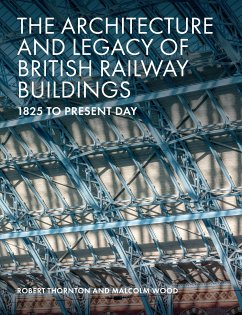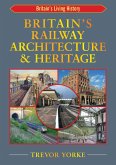Railway buildings have always had a fascinating character all of their own, despite many no longer being in operational railway service. This book tells the story of how these buildings evolved alongside the development of the railway in Great Britain and examines how architects over the years have responded to the operational, social and cultural influences that define their work. Written for those with a keen interest in architecture and the railway, as well as those new to the subject, The Architecture and Legacy of British Railway Buildings provides an unique insight into the production of railway architecture, both in the context of railway management and the significant periods of ownership, and the swings in national mood for railway-based transportation. As well as tracing its history, the authors take time to consider the legacy these buildings have left behind and the impact of heritage on a continually forward-looking industry. Topics covered include: the context of railway architecture today; the history of how it came into existence; the evolution of different railway building types; the unique aspects of railway building design, and finally, the key railway development periods and their architectural influences.
Dieser Download kann aus rechtlichen Gründen nur mit Rechnungsadresse in A, B, BG, CY, CZ, D, DK, EW, E, FIN, F, GR, H, IRL, I, LT, L, LR, M, NL, PL, P, R, S, SLO, SK ausgeliefert werden.









